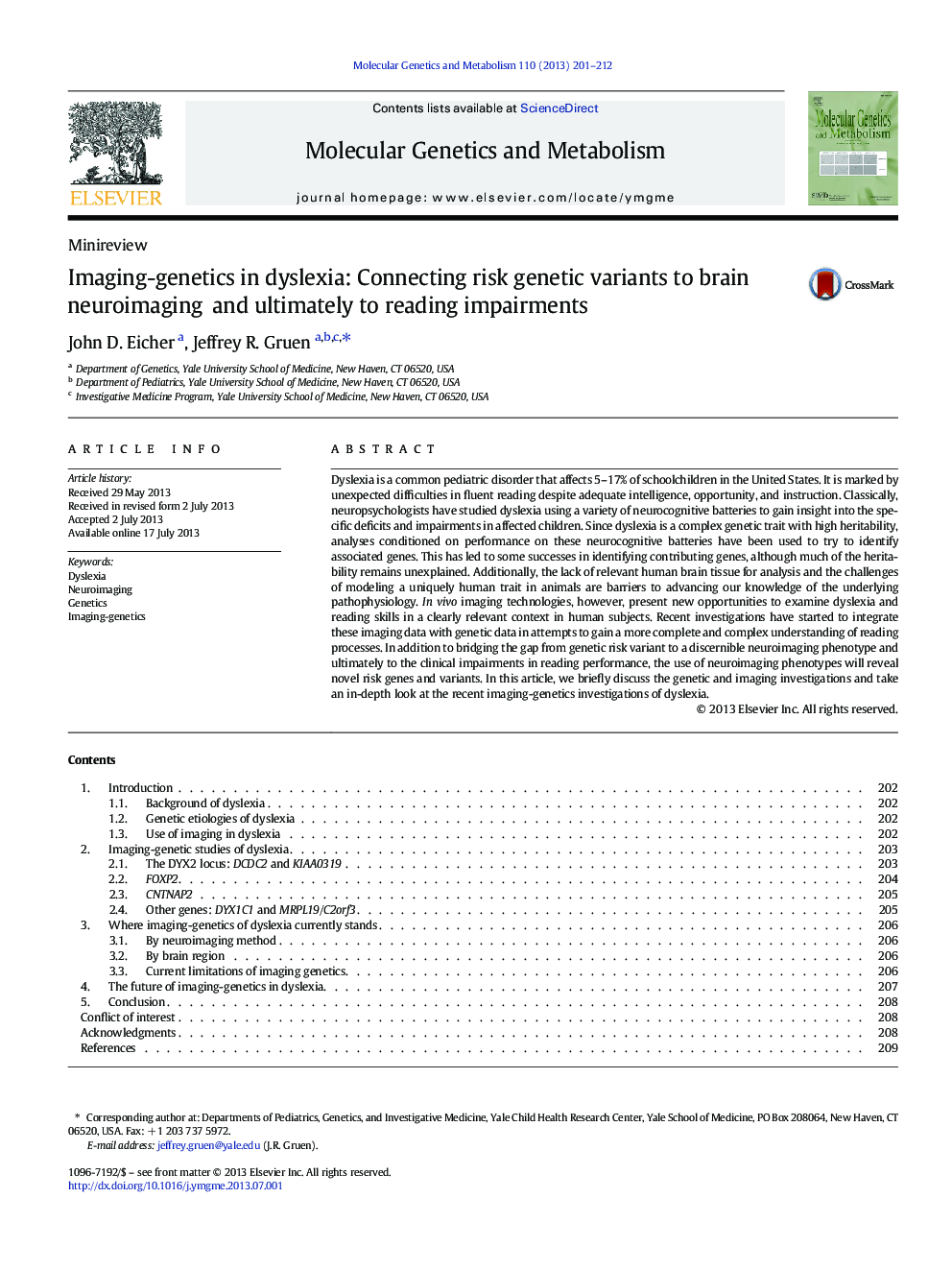| Article ID | Journal | Published Year | Pages | File Type |
|---|---|---|---|---|
| 10833174 | Molecular Genetics and Metabolism | 2013 | 12 Pages |
Abstract
Dyslexia is a common pediatric disorder that affects 5-17% of schoolchildren in the United States. It is marked by unexpected difficulties in fluent reading despite adequate intelligence, opportunity, and instruction. Classically, neuropsychologists have studied dyslexia using a variety of neurocognitive batteries to gain insight into the specific deficits and impairments in affected children. Since dyslexia is a complex genetic trait with high heritability, analyses conditioned on performance on these neurocognitive batteries have been used to try to identify associated genes. This has led to some successes in identifying contributing genes, although much of the heritability remains unexplained. Additionally, the lack of relevant human brain tissue for analysis and the challenges of modeling a uniquely human trait in animals are barriers to advancing our knowledge of the underlying pathophysiology. In vivo imaging technologies, however, present new opportunities to examine dyslexia and reading skills in a clearly relevant context in human subjects. Recent investigations have started to integrate these imaging data with genetic data in attempts to gain a more complete and complex understanding of reading processes. In addition to bridging the gap from genetic risk variant to a discernible neuroimaging phenotype and ultimately to the clinical impairments in reading performance, the use of neuroimaging phenotypes will reveal novel risk genes and variants. In this article, we briefly discuss the genetic and imaging investigations and take an in-depth look at the recent imaging-genetics investigations of dyslexia.
Keywords
Related Topics
Life Sciences
Biochemistry, Genetics and Molecular Biology
Biochemistry
Authors
John D. Eicher, Jeffrey R. Gruen,
